6 Tips to Master Documentary Wedding Photography
A few years ago, the wedding industry began to shift. More and more couples now want real over perfection, and strive for moments over posing.
Today, I’m going to break down what it takes to truly master the documentary photography style. I’ll cover topics from mindset, gear, editing, and at the core, storytelling. If you’re new to this approach or looking to refine your technique, I hope you can pick up some actionable and useful techniques.
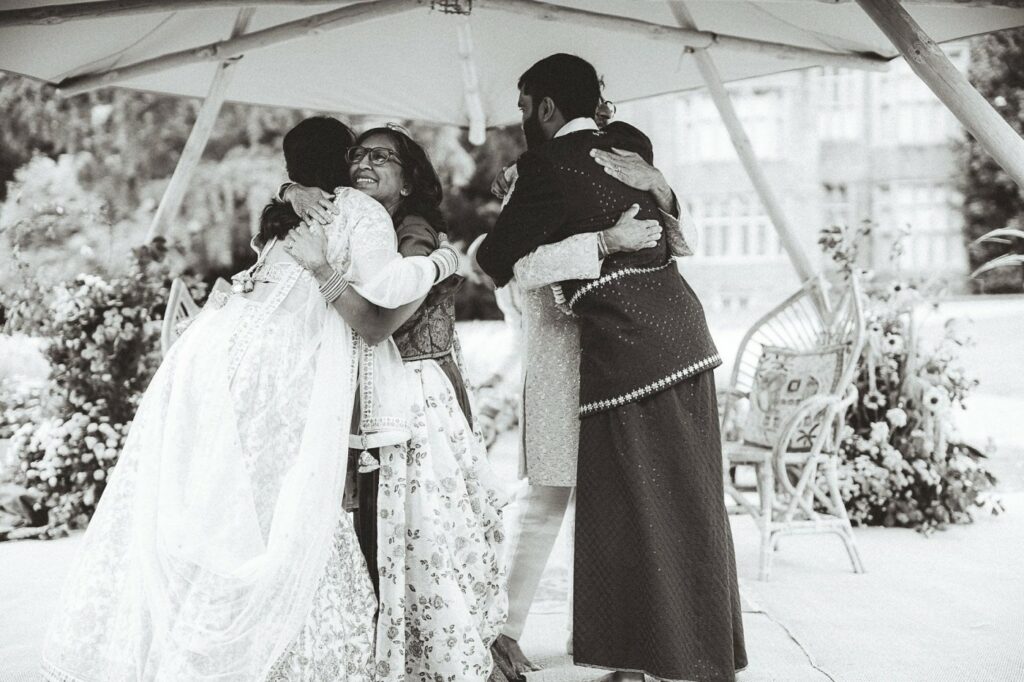
TL;DR: How to Master Documentary Wedding Photography
Couples book documentary photographers because they value real emotion over perfection and want a wedding gallery that feels like their story, not a photoshoot. So focus on:
- Moments over posing. Instead of directing the couple, you observe quietly and let authentic interactions unfold naturally.
- Anticipation. You lean to read energy and body language so you can be in the right place before a moment happens.
- Light, composition, and moment - When these three align, the image tells a compelling story without staging anything.
- Simple gear, like small, quiet cameras and fast prime lenses, helps you remain unobtrusive and fast.
- Editing to enhance, not alter. True-to-life colours, consistent grading, and minimal retouching to preserve the honesty in the set.
- An efficient workflow using tools like Aftershoot to handle culling and batch editing so you can focus more on storytelling.
What is documentary wedding photography?
Documentary wedding photography is a storytelling approach that captures authentic, unscripted moments rather than posed or staged shots.
Rooted in photojournalism, this style focuses on emotion, anticipation, and narrative flow — documenting the real atmosphere of a wedding day as it naturally unfolds.
Instead of directing couples, the photographer observes quietly, framing meaningful interactions through light, composition, and timing to tell a cohesive story that feels true to life.
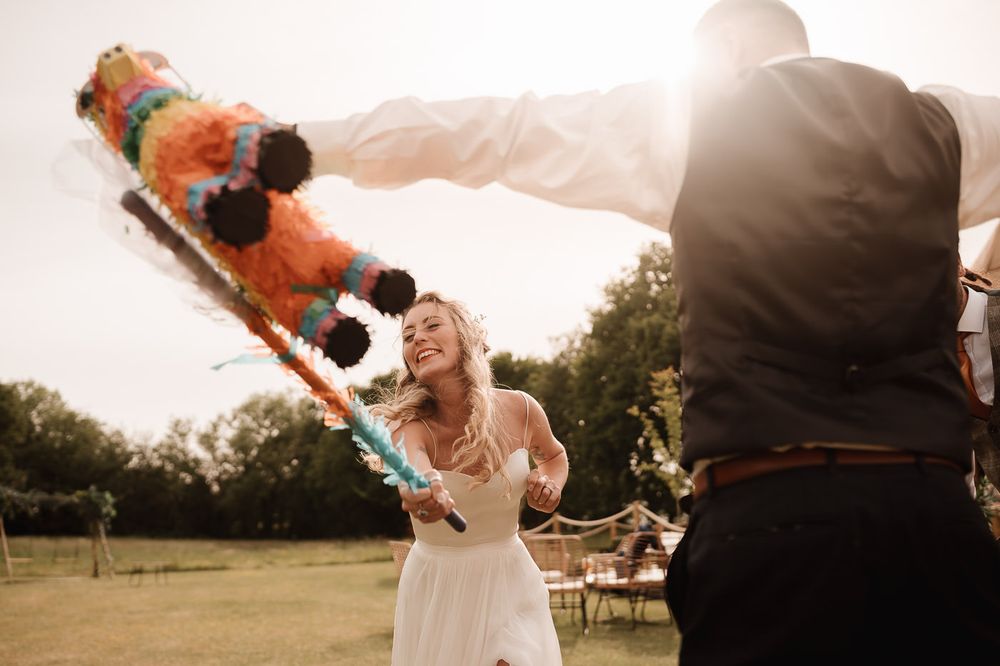
#1. Adopt the Observer Mindset
This style starts with your mindset. Here’s the big shift: You’re not a director, you’re an observer. Let me say that again. Not a director, an observer.
You need to learn to read energy, emotions, and body language to anticipate what will happen next. And when a moment starts unfolding, don’t interrupt. Let it play out. Trust this process and resist the urge to direct.
And keep asking yourself, “will this moment contribute to the story of the day?”
#2. Plan Ahead Without Over-Directing
Yes, documentary photography is reactive, but planning still matters.
I choose to have in-depth consultations with my couples before the wedding. We talk about family dynamics, key friendships, the timeline of the day, and anything emotional they’re expecting.
I ask questions like “which family members are you particularly close to?” and “will there be anything unique to the ceremony that I should look out for?”.
I always note these down, and I always have a printed document with me on the day to remind myself when I need to be on high alert.
Ultimately, the goal here is understanding what matters to them, so their day can be documented quietly and meaningfully.

#3. Keep Your Gear Simple and Unobtrusive
You don’t always need a mountain of gear, in fact, I personally prefer a smaller setup for speed and stealth.
My current wedding setup:
Cameras
I love my pair of Sony A7IVs. They’re full-frame, great in low light, not too big, and they’re quiet.
Lenses
I like working with a pair of prime lenses on two cameras, or a single zoom lens.
My favourite primes are 28mm, 50mm, and 85mm. Many established documentary photographers prefer a 35mm and 85mm combination. More recently, I’ve been using the Sony 28-70mm f/2 lens. This is a versatile zoom which I use for most of a wedding day.
Lighting
I have one off-camera flash, which I use to bounce light and maybe use direct in the evening. I prefer not to use complex wedding lighting setups, as I will risk missing a shot.
#4. Master Light, Composition, and Moment
A great photography mentor of mine, Kevin Mullins, is a pioneer of the documentary wedding photography style in the UK. He taught me that three essential ingredients are at the heart of a great documentary image. Light, composition, and moment. When all three align, you get an image that looks beautiful and feels alive and interactive.
Mastering these fundamentals will elevate your work and help you tell wedding stories with real emotional depth.
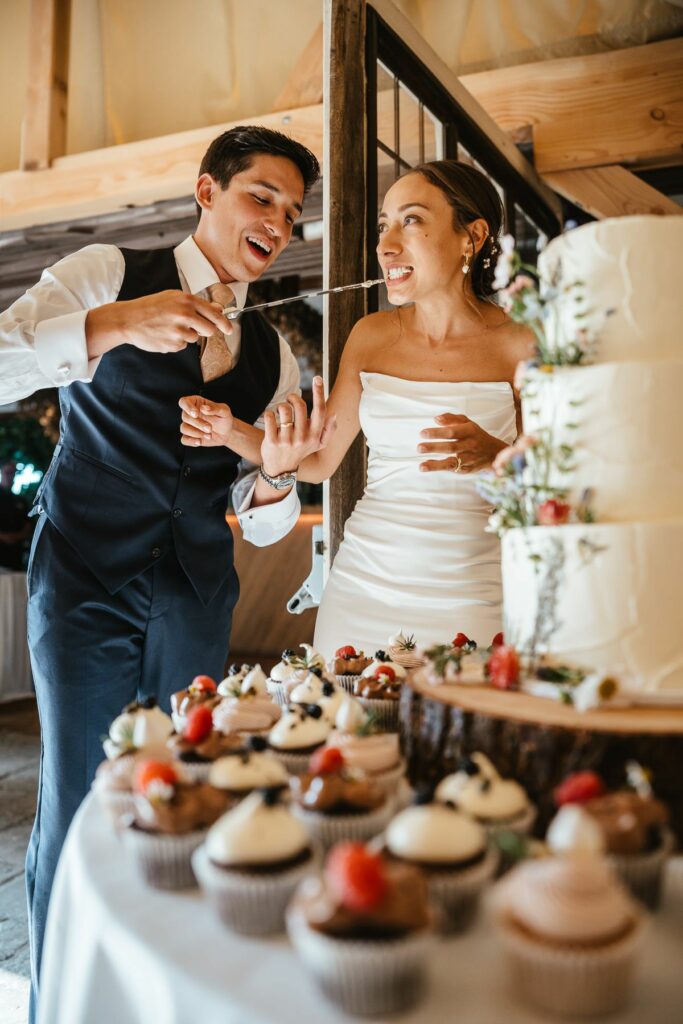
Using Light to Shape Emotion
In documentary photography, you may not get to control the light often, but you can control how you see and use it. The right light doesn’t just expose an image, it amplifies mood and emotion.
Techniques:
- Observe before you shoot. Where is the light falling? Where are the shadows?
- Use directional light, like from windows or doorways, to add dimension and drama.
- Embrace low-key, high-contrast moments for emotion and depth.
- Backlighting or rim lighting can add a touch of drama.
- Turn off ugly room lights or spots where possible, they create harsh shadows and colour casts.
- Use ambient sources like candles or fairy lights before reaching for your flash. Your camera can handle higher ISO’s than you may think.
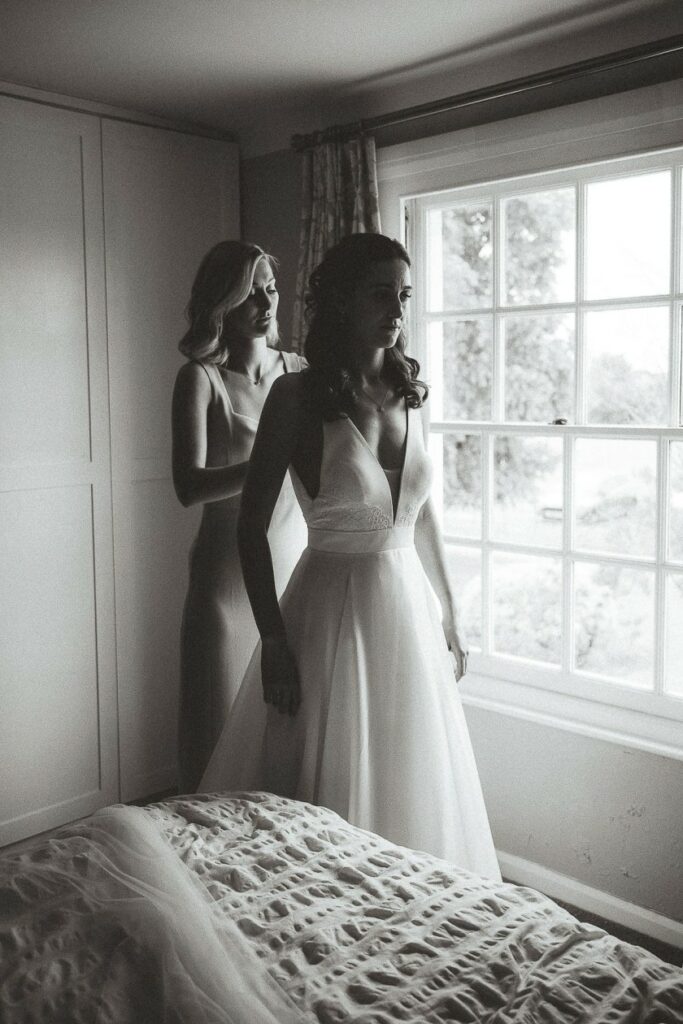
Composing with Depth and Layers
Composition is how you guide the viewer's eye. In documentary work, it’s also how you can provide context and emotion.
Techniques:
- Use foreground and background elements to add depth and narrative through layers.
- Frame shots through doors, mirrors, flowers, or other people to create intimacy.
- Use negative space to give your subjects room to breathe.
- Learn the rule of thirds, then learn where to break it! Start with balance, but don’t be afraid of bold or asymmetrical framing when it suits the story.
- Think of what part of the story the image tells. Ask if the image answers any questions. Think ‘who, what, where, why, how’.
- Embrace wider lenses, like 28mm or 35mm, to include different elements in the frame, not just the main subject.
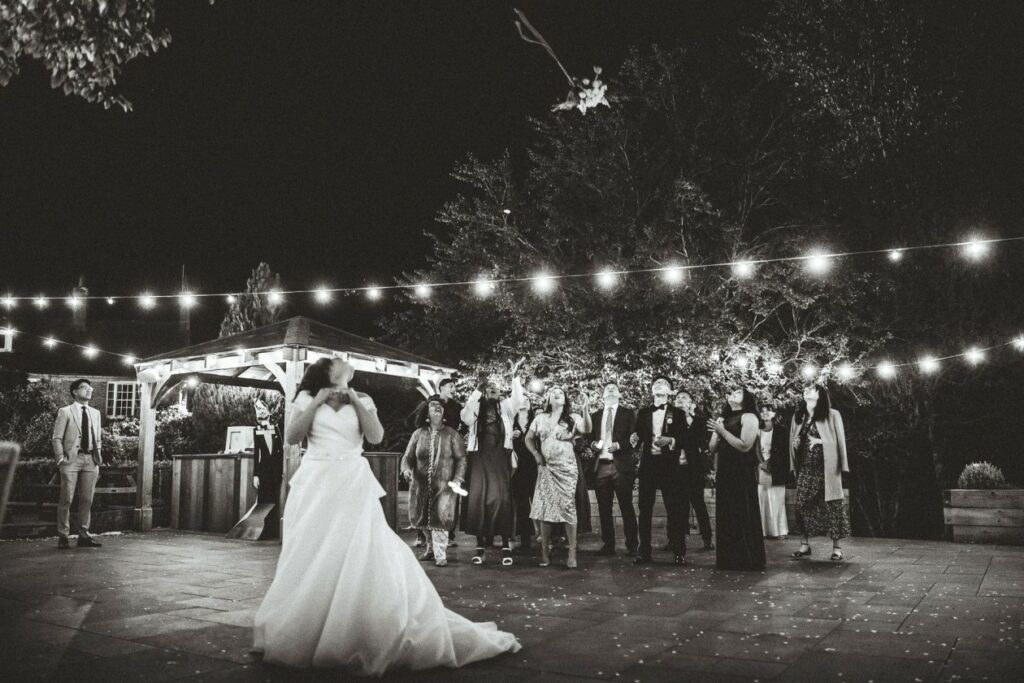
Capturing the Perfect Moment
Light and composition make a photo ‘technically’ good, but it’s the moment that will make your couples feel connected to it.
In documentary wedding photography, moment is king. Our job is to anticipate, observe, and react fast enough to catch it.
Techniques:
- Watch for micro emotions. A shaky breath, a hand squeeze, an eye roll before a speech.
- Shoot through the moment and don’t stop after a single frame. More moments will often evolve quickly.
- Stay patient and understand you may have to wait. This is where you will learn to anticipate moments.
- Learn who’s close to the couple and keep a casual eye on them all day. These are your key characters to the story.
- Be ready for in-between moments. The best moments are often when people are simply ‘being people’ and may not always happen during the big events like confetti or cake cutting.
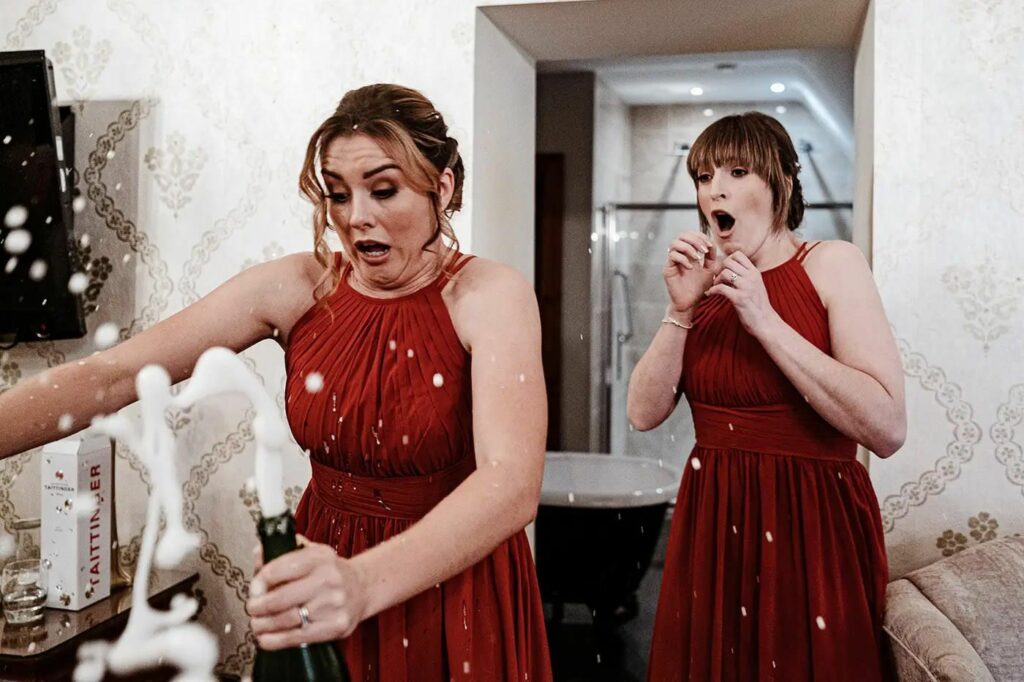
When all Three Align
When great light, composition, and moment come together in one shot, you have a standout image.
It might not be ‘award-winning’ or ‘perfect’, but it will resonate with the couple and their loved ones.
Keeping these three core elements in mind will help in creating real, emotional images that are true to the day.
Read also: Candid Portrait Photography: A Complete Guide to Capturing Authentic Moments
#5. Streamline your editing workflow with AI
With documentary photography, you’ll shoot thousands of frames to catch the full emotion of a moment. Choosing which images tell the story and getting them looking their best takes time.
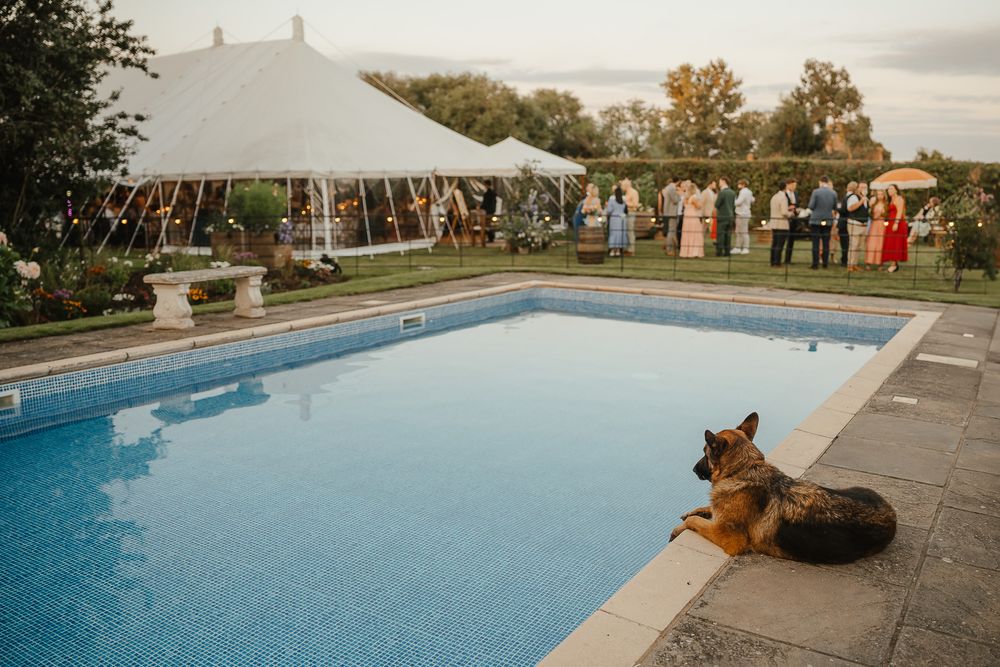
Why I use Aftershoot for culling
Aftershoot's AI Culling doesn’t just look for sharp eyes, it intelligently selects photos based on:
- Facial expressions
- Eyes open/closed
- Duplicates and subtle differences
- Emotional cues and storytelling potential
It’s helped me go from 4+ hours of manual culling to under 30 minutes, while still keeping flow and control intact.
To see it in action, take our 5-min demo or check out Aftershoot’s 5-Step Wedding Photography Workflow.
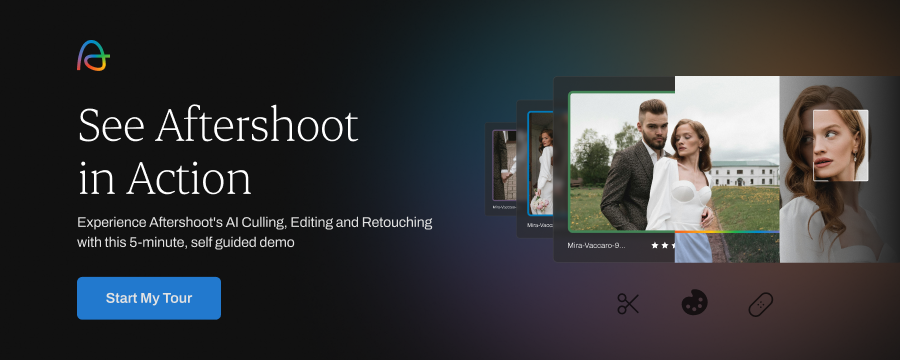
Editing documentary wedding photography shots
I like to keep my editing quite true-to-life but with some flair. I want to enhance the mood without overriding the moment.
Keep colour grading consistent to enhance the story. Avoid heavy skin retouching as this breaks the authenticity.
I personally use batch editing with AI to save time and maintain my signature style.
Aftershoot’s AI editing takes my custom preset and applies it intelligently across my gallery. It will adapt to lighting changes throughout the day as I move from outdoors to indoors and shoot late into the night.
More recently, I’ve been altering my preset slightly, and I’ve been able to use Aftershoot’s Instant AI profiles to use them straight away.
Check out Aftershoot’s post on Wedding Photography Editing Techniques You Need to Know
My final delivery tips
My job doesn’t end when I export the photos. The gallery should feel like a visual storybook.
Tips:
- Organize chronologically but with intent
- Lead with a strong emotional opener
- Include wide, establishing shots to set scenes
- Don’t skip transitions (guests moving between spaces, etc.)
- Highlight unscripted in-between moments
Delivery doesn’t stop at export. It’s the bridge between your editing process and how your clients experience their story.
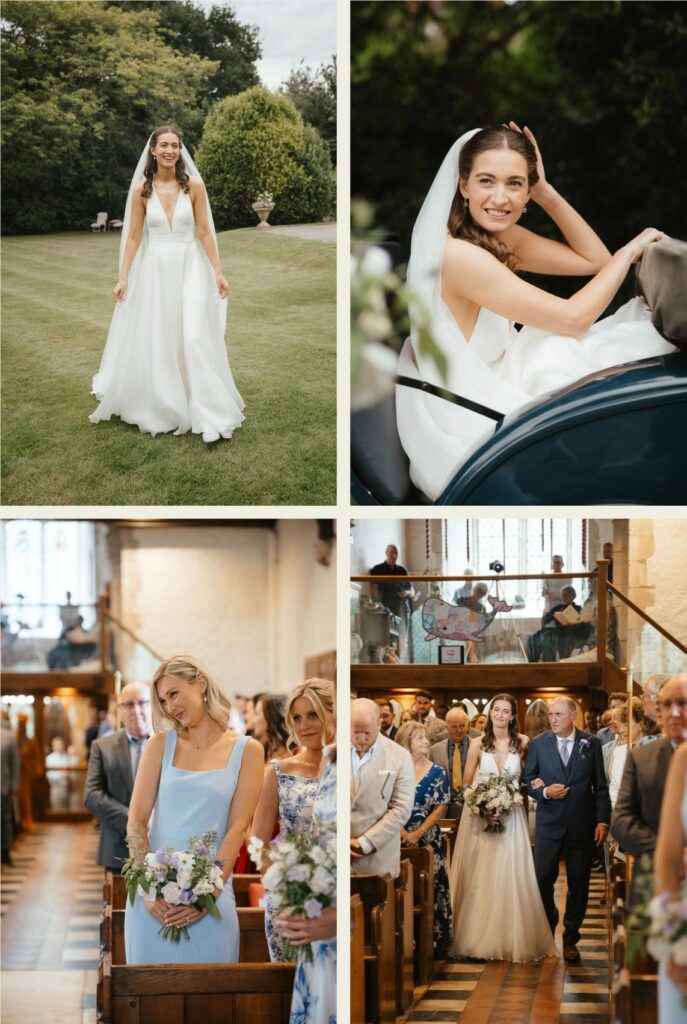
Once you’ve polished and presented your gallery, it’s time to take it one step further—by shaping how that story represents your brand.
#6. Tell complete stories that reflect your brand
If you want to attract couples who value real, emotive storytelling over posed perfection, your brand has to reflect that.
It’s not just about showing good photos. It’s about communicating why you shoot the way you do, and how that benefits the couples you serve.
Here’s how to shape a brand that draws in the right clients and sets you apart as a documentary-style photographer.
Show full stories not just highlights
Highlight reels can be impressive, but documentary photography is about emotional narrative.
- Feature full wedding galleries that flow naturally from morning prep to the dance floor.
- Don’t just show the most impactful moments, show the quiet, awkward, joyful, and real ones.
- Use blog posts or Instagram carousels to walk viewers through a day, moment by moment.
Write like a storyteller
Couples don’t connect with posts that talk about gear. They connect with emotion.
- Use captions to describe the moment.
- Share little stories about what was happening in the frame.
- Maintain a warm, personal tone that reflects the emotional experience of being there.
The more clearly you communicate your approach, the more likely you are to attract couples who resonate with it. That leads to better weddings, better experiences, and better word-of-mouth.
Truthful storytelling backed by AI workflows
Mastering documentary wedding photography is about preserving truth.
You need to be fast, observant, technically confident, and emotionally aware. But to deliver those stories quickly and beautifully, tools like Aftershoot can do the heavy lifting so you stay focused on the craft.
Try Aftershoot free for 30 days and transform your workflow
FAQ: Documentary Wedding Photography
What is the difference between traditional vs. documentary wedding photography?
Traditional wedding photography involves posing, directing, and creating moments meaning the photographer controls the scene. Documentary photography is the opposite: you observe rather than instruct. The goal is to capture authentic interactions as they naturally unfold, without staging or altering the moment.
Do documentary photographers ever do poses or group photos?
Yes. Most couples still want a few portraits and family groups. The key difference is how they’re done. A documentary photographer keeps portraits simple, fast, and natural, focusing on genuine connection instead of rigid posing.
How much (if any) direction is acceptable without breaking the documentary feel?
Minimal direction is fine as long as it doesn’t change the authenticity of the moment. Think “light guidance” such as moving someone closer to better light or suggesting a spot to stand rather than telling them how to act or interact.
What’s your backup plan (gear, workflow) when something fails mid-day?
Documentary photographers stay prepared. Redundant camera bodies, multiple memory cards, off-camera backup, and cloud-based workflows help avoid disaster.
How do you educate clients (and prospects) about what documentary coverage is and isn’t?
I like to set expectations early on my website, social media, and during consultations. The message is simple: I won’t stage moments, interrupt emotions, or take couples away from their day. Instead, I reassure them that they’ll get meaningful storytelling and a gallery that reflects how their day truly felt.
Written by Paul Waring
Paul is a documentary wedding photographer based in Cheshire, UK. For more details, visit here
